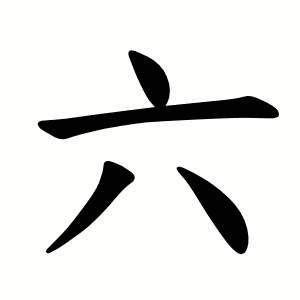六
- six, number 6, sixth;
Etymology
The origin of the character's shape is unclear, but there is a widely accepted theory that it derives from a symbolic diagram (지사자) representing both hands with three fingers extended on each.
However, this theory is considered unreliable because records from pre-Qin China (before the unified Qin Empire), from oracle bone script to bronze inscriptions, show forms resembling the current character 介. There is also a theory linking it to the shape of a hut (廬).
The current form of the character became widely used after the Qin dynasty, which had used slightly different character forms and later unified the Chinese script across the continent.
Usage in Korean
There are variant forms or homophones such as 陸 and 陆. These originally meant "land" (륙) and are used in words like continent (大陸), landmass (陸地), and track and field (陸上競技).
Because of the similarity in pronunciation, they came to be used interchangeably. While the official name is "yeoseot ryuk" ("six ryuk"), it's also called "yeoseot yuk" ("six yuk"), and in South Korea, using "yuk" is effectively the standard.
Words that derived from 六
- 卜金 (YC)
- ⿱ 亠 八
